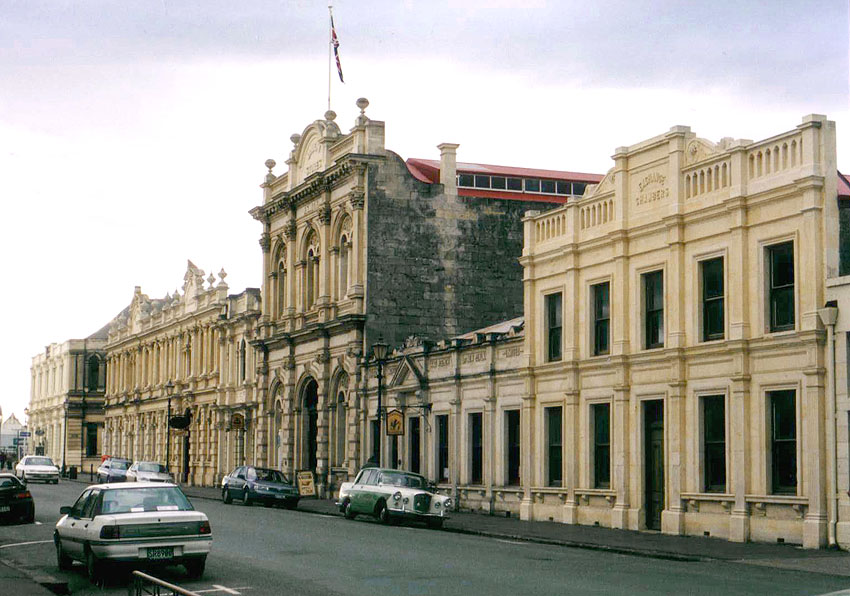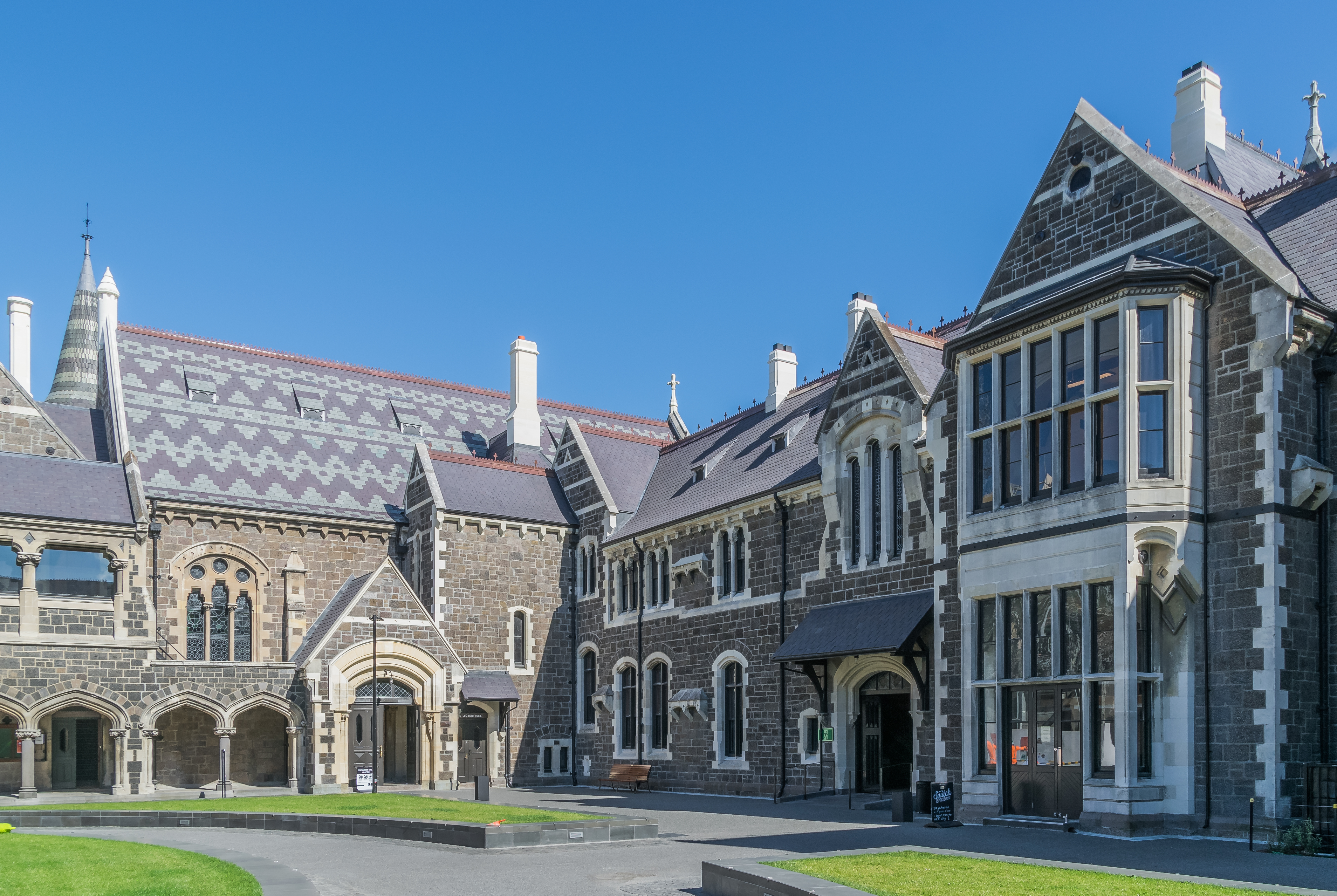|
Oamaru Stone
Oamaru stone, sometimes called whitestone, is a hard, compact limestone, quarried at Weston, near Oamaru in Otago, New Zealand. Oamaru stone was used on many of the grand public buildings in the towns and cities of the southern South Island, especially after the financial boom caused by the Central Otago goldrush of the 1860s. Initially used primarily in Oamaru itself, it became popular in Dunedin in around 1866, with the University of Otago's Registry Building being the first major structure in the city to make use of it.Limestones , ''Transactions and Proceedings of the Royal Society of New Zealand'', vol 8 (1875), pp. 138–148. The city of and town of Oamaru both have many fine examples of Oamar ... [...More Info...] [...Related Items...] OR: [Wikipedia] [Google] [Baidu] |
Oamaru Stonework
Oamaru (; mi, Te Oha-a-Maru) is the largest town in North Otago, in the South Island of New Zealand, it is the main town in the Waitaki District. It is south of Timaru and north of Dunedin on the Pacific coast; State Highway 1 and the railway Main South Line connect it to both cities. With a population of , Oamaru is the 28th largest urban area in New Zealand, and the third largest in Otago behind Dunedin and Queenstown. The town is the seat of Waitaki District, which includes the surrounding towns of Kurow, Weston, Palmerston, and Hampden. which combined have a total population of 23,200. Friendly Bay is a popular recreational area located at the edge of Oamaru Harbour, south to Oamaru's main centre. Just to the north of Oamaru is the substantial Alliance Abattoir at Pukeuri, at a major junction with State Highway 83, the main route into the Waitaki Valley. This provides a road link to Kurow, Omarama, Otematata and via the Lindis Pass to Queenstown and Wanaka. Oamar ... [...More Info...] [...Related Items...] OR: [Wikipedia] [Google] [Baidu] |
Basalt
Basalt (; ) is an aphanitic (fine-grained) extrusive igneous rock formed from the rapid cooling of low-viscosity lava rich in magnesium and iron (mafic lava) exposed at or very near the surface of a rocky planet or moon. More than 90% of all volcanic rock on Earth is basalt. Rapid-cooling, fine-grained basalt is chemically equivalent to slow-cooling, coarse-grained gabbro. The eruption of basalt lava is observed by geologists at about 20 volcanoes per year. Basalt is also an important rock type on other planetary bodies in the Solar System. For example, the bulk of the plains of Venus, which cover ~80% of the surface, are basaltic; the lunar maria are plains of flood-basaltic lava flows; and basalt is a common rock on the surface of Mars. Molten basalt lava has a low viscosity due to its relatively low silica content (between 45% and 52%), resulting in rapidly moving lava flows that can spread over great areas before cooling and solidifying. Flood basalts are t ... [...More Info...] [...Related Items...] OR: [Wikipedia] [Google] [Baidu] |
Caen Stone
Caen stone (french: Pierre de Caen) is a light creamy-yellow Jurassic limestone quarried in north-western France near the city of Caen. The limestone is a fine grained oolitic limestone formed in shallow water lagoons in the Bathonian Age about 167 million years ago. The stone is homogeneous, and therefore suitable for carving. Use in building The stone was first used for building in the Gallo-Roman period with production from open cast quarries restarting in the 11th century. Shipped to England, Canterbury Cathedral, Westminster Abbey and the Tower of London were all partially built from Caen stone. Underground mining developed in the 19th century, but the stone trade declined in the 20th century eventually ceasing in the 1960s. Excavation restarted in the 1980s with the stone being used for building the Caen Memorial. A 2004 decree by Caen city council authorised the annual quarrying of 9000 tonnes of stone. Notable examples *Caen stone was used in the construction of th ... [...More Info...] [...Related Items...] OR: [Wikipedia] [Google] [Baidu] |
Oolite
Oolite or oölite (''egg stone'') is a sedimentary rock formed from ooids, spherical grains composed of concentric layers. The name derives from the Ancient Greek word for egg (ᾠόν). Strictly, oolites consist of ooids of diameter 0.25–2 millimetres; rocks composed of ooids larger than 2 mm are called pisolites. The term ''oolith'' can refer to oolite or individual ooids. Composition Ooids are most commonly composed of calcium carbonate ( calcite or aragonite), but can be composed of phosphate, clays, chert, dolomite or iron minerals, including hematite. Dolomitic and chert ooids are most likely the result of the replacement of the original texture in limestone. Oolitic hematite occurs at Red Mountain near Birmingham, Alabama, along with oolitic limestone. They are usually formed in warm, supersaturated, shallow, highly agitated marine water intertidal environments, though some are formed in inland lakes. The mechanism of formation starts with a small fr ... [...More Info...] [...Related Items...] OR: [Wikipedia] [Google] [Baidu] |
Silica
Silicon dioxide, also known as silica, is an oxide of silicon with the chemical formula , most commonly found in nature as quartz and in various living organisms. In many parts of the world, silica is the major constituent of sand. Silica is one of the most complex and most abundant families of materials, existing as a compound of several minerals and as a synthetic product. Notable examples include fused quartz, fumed silica, silica gel, opal and aerogels. It is used in structural materials, microelectronics (as an electrical insulator), and as components in the food and pharmaceutical industries. Structure In the majority of silicates, the silicon atom shows tetrahedral coordination, with four oxygen atoms surrounding a central Si atomsee 3-D Unit Cell. Thus, SiO2 forms 3-dimensional network solids in which each silicon atom is covalently bonded in a tetrahedral manner to 4 oxygen atoms. In contrast, CO2 is a linear molecule. The starkly different structures of th ... [...More Info...] [...Related Items...] OR: [Wikipedia] [Google] [Baidu] |
Iron Oxide
Iron oxides are chemical compounds composed of iron and oxygen. Several iron oxides are recognized. All are black magnetic solids. Often they are non-stoichiometric. Oxyhydroxides are a related class of compounds, perhaps the best known of which is rust. Iron oxides and oxyhydroxides are widespread in nature and play an important role in many geological and biological processes. They are used as iron ores, pigments, catalysts, and in thermite, and occur in hemoglobin. Iron oxides are inexpensive and durable pigments in paints, coatings and colored concretes. Colors commonly available are in the "earthy" end of the yellow/orange/red/brown/black range. When used as a food coloring, it has E number E172. Stoichiometries Iron oxides feature as ferrous ( Fe(II)) or ferric (Fe(III)) or both. They adopt octahedral or tetrahedral coordination geometry. Only a few oxides are significant at the earth's surface, particularly wüstite, magnetite, and hematite. * Oxides of ... [...More Info...] [...Related Items...] OR: [Wikipedia] [Google] [Baidu] |
Waitaki District Council
Waitaki District Council ( mi, Te Kaunihera ā-Rohe o Waitaki) is the territorial authority for the Waitaki District of New Zealand New Zealand ( mi, Aotearoa ) is an island country in the southwestern Pacific Ocean. It consists of two main landmasses—the North Island () and the South Island ()—and over 700 smaller islands. It is the sixth-largest island count .... The council is led by the mayor of Waitaki, who is currently . There are also 10 ward councillors. Composition Councillors * Mayor * Ahuriri Ward: 1 member * Corriedale Ward: 2 members * Oamaru Ward: 6 members * Waihemo Ward: 1 member History The council was formed in 1989. Its predecessors were Oamaru Borough Council (1866-1989), Palmerston County Council (1872-1966), Waitaki County Council (1876-1989),McKenzie, Dorothy and Budd, Arthur. ''Waitaki County Council 1877 – 1977.'' Thos. Bracken & Co. Ltd., Oamaru, 1976 and Hampden Borough Council (1879-1989).McDonald, K.C. ''White Stone Count ... [...More Info...] [...Related Items...] OR: [Wikipedia] [Google] [Baidu] |
Christchurch Arts Centre
The Arts Centre Te Matatiki Toi Ora is a hub for arts, culture, education, creativity and entrepreneurship in Christchurch, New Zealand. It is located in the Gothic Revival former Canterbury College (now the University of Canterbury), Christchurch Boys' High School and Christchurch Girls' High School buildings, many of which were designed by Benjamin Mountfort. The centre is a national landmark and taonga as it is home to New Zealand's largest collection of category one heritage buildings with 21 of the 23 buildings covered by Heritage New Zealand listings. The centre, which is held in trust for the people of Canterbury and its visitors, has been undergoing a large restoration since it was badly damaged in the 2011 Christchurch earthquake. Buildings are progressively reopening to the public as they are strengthened and repaired and more than two-thirds of the buildings have reopened. [...More Info...] [...Related Items...] OR: [Wikipedia] [Google] [Baidu] |






